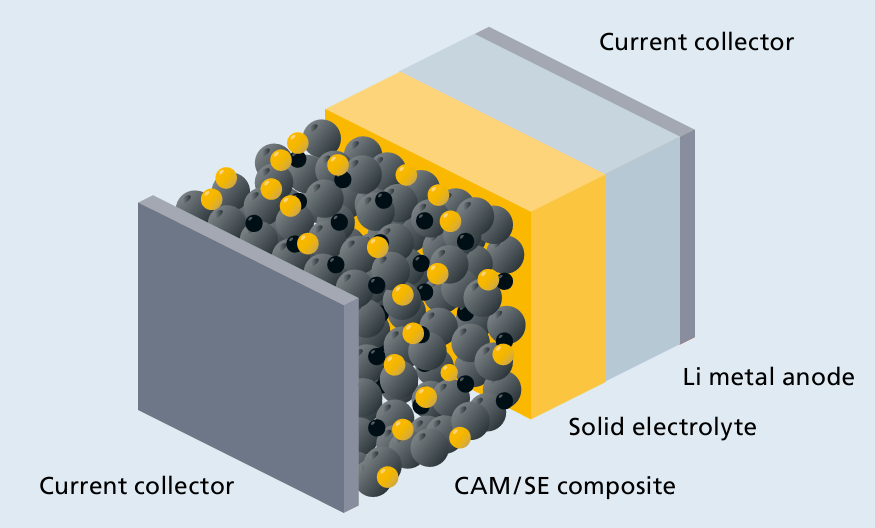‘When finance flows, ambition grows”: COP30’s call for action – UN News

Report on Climate Finance Mobilization at COP30 and its Implications for Sustainable Development Goals (SDGs)
Introduction: The Centrality of Finance to Climate Action and Global Goals
- Financial mobilization has been identified as the critical driver for achieving global climate objectives and ensuring the safety and survival of nations on the front lines of the climate crisis.
- This imperative is central to the fulfillment of Sustainable Development Goal 13 (Climate Action), as all mitigation and adaptation efforts are contingent upon the availability of adequate funding.
High-Level Ministerial Dialogue on Climate Finance
Key Statements and Financial Targets
- During the Third High-Level Ministerial Dialogue on Climate Finance at COP30, UN General Assembly President Annalena Baerbock called for the implementation of up to $1.3 trillion in annual climate finance.
- It was stressed that these financial disbursements must reach those most in need in a manner that is quick, transparent, and fair, directly supporting the aims of SDG 10 (Reduced Inequalities).
Interlinkages between Climate, Social Justice, and Sustainable Development
- The dialogue underscored that climate action and social justice are “inseparable.”
- A causal link was established wherein climate insecurity exacerbates challenges related to SDG 1 (No Poverty) and SDG 2 (Zero Hunger), which in turn can drive migration and conflict, undermining SDG 16 (Peace, Justice and Strong Institutions). Breaking this cycle is essential for global progress.
Progress and Challenges in the Global Energy Transition
The Rise of Renewable Energy
- The advancement of renewable energy, once considered unrealistic, was highlighted as a major success, directly contributing to SDG 7 (Affordable and Clean Energy).
- Key statistics reported include:
- Global investment in clean energy reached $2 trillion in 2024, exceeding fossil fuel investment by approximately $800 billion.
- Solar power has become the most cost-effective form of electricity in history.
Addressing Disparities in Energy Access and Investment
- A significant challenge remains in directing capital to regions with the greatest need, particularly Africa.
- Despite possessing renewable energy potential 50 times greater than the world’s projected electricity demand for 2040, over 600 million Africans lack access to electricity, a direct barrier to achieving SDG 7.
- A call was made for developed nations to fulfill their commitments under SDG 17 (Partnerships for the Goals) and to advance the reform of global financial institutions.
The Role of Finance in Driving Ambition and Implementation
Statements from the UN Climate Change Executive Secretary
- UN Climate Change Executive Secretary Simon Stiell described finance as the “lifeblood of climate action,” essential for turning ambition into implementation.
- He noted that the most vulnerable countries continue to face significant challenges in accessing long-pledged funds, which impedes progress on SDG 13.
The Imperative for Sufficient, Predictable, and Equitable Funding
- Current global financial flows for climate action were characterized as insufficient, unpredictable, and inequitably shared.
- The principle that “When finance flows, ambition grows” was emphasized, linking financial investment to tangible benefits across multiple Sustainable Development Goals.
- The co-benefits of enhanced and equitable climate finance include:
- Job creation, supporting SDG 8 (Decent Work and Economic Growth).
- Improved health outcomes, contributing to SDG 3 (Good Health and Well-being).
- Enhanced community protection and resilience, aligning with SDG 11 (Sustainable Cities and Communities).
- Securing a more resilient and prosperous planet for all.
Analysis of Sustainable Development Goals in the Article
1. Which SDGs are addressed or connected to the issues highlighted in the article?
-
SDG 7: Affordable and Clean Energy
The article heavily focuses on the transition to renewable energy. It highlights that renewable energy is the “fastest-growing energy source on Earth” and that “Solar power has become the cheapest form of electricity in history.” It also points out the significant energy access gap, stating that “More than 600 million Africans still lack access to electricity,” directly connecting to the goal of ensuring access to clean and affordable energy for all.
-
SDG 13: Climate Action
This is the central theme of the article. The entire text revolves around discussions at the UN climate change conference (COP30) concerning climate finance as the “engine of climate transition.” The article emphasizes the urgency of taking action to “secure a livable planet and protect millions of lives” from the climate crisis, which is the core mission of SDG 13.
-
SDG 1: No Poverty
The article explicitly links climate change to poverty. It quotes the UN General Assembly President stating, “Climate insecurity fuels hunger and poverty, poverty drives migration and conflict.” This establishes a direct connection between climate action (or inaction) and its impact on poverty, making SDG 1 highly relevant.
-
SDG 17: Partnerships for the Goals
The article’s focus on international cooperation and financial mobilization underscores the importance of global partnerships. The call for developed nations to “fulfill their technological and financial commitments” and the discussion about mobilizing up to “$1.3 trillion in annual climate finance” are prime examples of the partnerships needed to achieve the goals, as outlined in SDG 17.
2. What specific targets under those SDGs can be identified based on the article’s content?
-
SDG 7: Affordable and Clean Energy
- Target 7.1: By 2030, ensure universal access to affordable, reliable and modern energy services. This is directly addressed by the statement that “More than 600 million Africans still lack access to electricity.”
- Target 7.2: By 2030, increase substantially the share of renewable energy in the global energy mix. The article supports this by noting that renewable energy is the “fastest-growing energy source” and that global investment in clean energy reached “$2 trillion.”
- Target 7.a: By 2030, enhance international cooperation to facilitate access to clean energy research and technology… and promote investment in energy infrastructure and clean energy technology. The article’s call for capital to flow to Africa to tap its “vast potential” for renewable energy aligns perfectly with this target.
-
SDG 13: Climate Action
- Target 13.a: Implement the commitment undertaken by developed-country parties… to a goal of mobilizing jointly $100 billion annually… to address the needs of developing countries. The article discusses an evolution of this target, mentioning the need to implement “up to $1.3 trillion in annual climate finance” and urging developed nations to fulfill their commitments.
-
SDG 1: No Poverty
- Target 1.5: By 2030, build the resilience of the poor and those in vulnerable situations and reduce their exposure and vulnerability to climate-related extreme events. The article speaks to this by describing access to financial resources as “a matter of survival” for nations on the front lines and highlighting the need for finance to act as a “shield of resilience.”
-
SDG 17: Partnerships for the Goals
- Target 17.3: Mobilize additional financial resources for developing countries from multiple sources. The entire article is a call to action for this target, focusing on the mobilization of climate finance and stressing that the current volume is “neither sufficient nor predictable enough.”
3. Are there any indicators mentioned or implied in the article that can be used to measure progress towards the identified targets?
-
For SDG 7 (Affordable and Clean Energy)
- Indicator 7.1.1 (Proportion of population with access to electricity): The article provides a specific data point for this indicator by stating, “More than 600 million Africans still lack access to electricity.” This number serves as a baseline to measure progress in energy access.
- Indicator related to investment in clean energy: The article provides financial figures that can be used as indicators of progress, such as the “global investment in clean energy reached $2 trillion – about $800 billion more than in fossil fuels.”
-
For SDG 13 (Climate Action) & SDG 17 (Partnerships for the Goals)
- Indicator 13.a.1 (Amounts provided and mobilized in United States dollars per year…): The article directly references this by discussing the need for “$1.3 trillion in annual climate finance.” This figure acts as a proposed target for the indicator, measuring the flow of financial resources from developed to developing countries for climate action.
-
For SDG 1 (No Poverty)
- Implied Indicator: While no specific numerical indicator is given, the article implies the need to measure the reduction of poverty and hunger in climate-vulnerable regions as a result of climate finance. The statement “Climate insecurity fuels hunger and poverty” suggests that a successful outcome would be the breaking of this “vicious cycle.”
4. Summary Table of SDGs, Targets, and Indicators
| SDGs | Targets | Indicators |
|---|---|---|
| SDG 7: Affordable and Clean Energy |
7.1: Ensure universal access to affordable, reliable and modern energy services.
7.2: Increase substantially the share of renewable energy in the global energy mix. 7.a: Enhance international cooperation and promote investment in clean energy technology. |
7.1.1: Proportion of population with access to electricity (Mentioned as “More than 600 million Africans still lack access to electricity”).
Amount of investment in clean energy (Mentioned as “$2 trillion”). |
| SDG 13: Climate Action | 13.a: Implement the commitment by developed countries to mobilize climate finance for developing countries. | 13.a.1: Amounts provided and mobilized in United States dollars per year (Mentioned as a need for “up to $1.3 trillion in annual climate finance”). |
| SDG 1: No Poverty | 1.5: Build the resilience of the poor and reduce their vulnerability to climate-related extreme events. | Implied: Reduction in poverty and hunger linked to climate insecurity (Referenced in the quote “Climate insecurity fuels hunger and poverty”). |
| SDG 17: Partnerships for the Goals | 17.3: Mobilize additional financial resources for developing countries from multiple sources. | Total financial flows for development (The article’s central theme of mobilizing climate finance and ensuring it is sufficient and predictable). |
Source: news.un.org
What is Your Reaction?
 Like
0
Like
0
 Dislike
0
Dislike
0
 Love
0
Love
0
 Funny
0
Funny
0
 Angry
0
Angry
0
 Sad
0
Sad
0
 Wow
0
Wow
0


















































.jpg.webp?itok=0ZsAnae9#)





/environment-climate-change-and-health-(ech)/water-sanitation-hygiene-and-health-(wsh)/landfill-tuvalu-36092.tmb-1200v.jpg?sfvrsn=5c21fe40_1#)


















